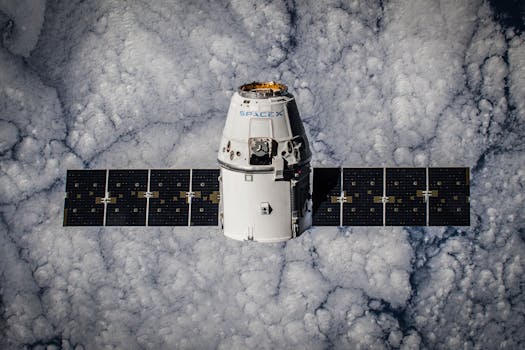Future of Satellites: Revolutionizing Global Connectivity with WordPress

Future of Satellites: Revolutionizing Global Connectivity with WordPress
Future of satellites is poised to revolutionize global connectivity, and WordPress is at the forefront of this revolution. With advancements in technology and the increasing demand for satellite-based services, the future of satellites looks brighter than ever. The use of satellites in various industries such as telecommunications, navigation, and weather forecasting has become increasingly important, and their role is expected to expand even further in the coming years.
The future of satellites is not just about launching more satellites into space, but also about creating a network of interconnected satellites that can provide seamless and reliable connectivity to anyone, anywhere in the world. This is where WordPress comes in, as a platform that can help facilitate the development of satellite-based services and applications. With its ease of use, flexibility, and scalability, WordPress is an ideal choice for building websites and applications that cater to the needs of the satellite industry.
Advancements in Satellite Technology
Recent advancements in satellite technology have made it possible to launch smaller, more efficient, and cost-effective satellites into space. This has led to an increase in the number of satellite launches, with many private companies such as SpaceX, Blue Origin, and OneWeb entering the market. These companies are not only launching satellites but also developing new technologies such as reusable rockets, which are reducing the cost of access to space.
The development of new satellite technologies such as phased arrays, digital payloads, and satellite-based internet of things (IoT) is also transforming the industry. Phased arrays, for example, allow satellites to steer their beams electronically, enabling them to provide more targeted and efficient coverage. Digital payloads, on the other hand, enable satellites to process and analyze data in real-time, making them more versatile and responsive to changing conditions.
Increasing Demand for Satellite-Based Services
The demand for satellite-based services is increasing rapidly, driven by the growing need for global connectivity, navigation, and weather forecasting. The use of satellites in telecommunications, for example, is becoming increasingly important, as they provide a means of communicating with remote or underserved areas where traditional infrastructure is lacking. Satellites are also used in navigation, providing location information and timing signals that are essential for a wide range of applications, from aviation to agriculture.
The increasing demand for satellite-based services is also driven by the growing need for weather forecasting and climate monitoring. Satellites play a critical role in monitoring weather patterns, tracking storms, and predicting climate change. They provide essential data that helps scientists and policymakers understand and mitigate the impacts of climate change, making them a vital tool in the fight against global warming.
Challenges and Opportunities
Despite the many advancements and opportunities in the satellite industry, there are also challenges that need to be addressed. One of the biggest challenges is the issue of space debris, which poses a significant threat to the safety and sustainability of space operations. As the number of satellites in orbit increases, so does the risk of collisions and the accumulation of debris, which can have devastating consequences for the environment and human societies.
Another challenge facing the satellite industry is the need for greater international cooperation and regulation. As the use of satellites becomes more widespread, there is a growing need for standards and protocols that can ensure the safe and responsible use of space. This requires cooperation between governments, industry stakeholders, and civil society organizations, which can be a complex and challenging process.
Despite these challenges, the future of satellites looks bright, with many opportunities for growth and innovation. The development of new technologies and applications, such as satellite-based IoT and big data analytics, is creating new opportunities for businesses and entrepreneurs. The use of satellites in areas such as disaster response and recovery, environmental monitoring, and sustainable development is also becoming increasingly important, making them a vital tool in the pursuit of a more equitable and sustainable world.
Conclusion
In conclusion, the future of satellites is poised to revolutionize global connectivity, and WordPress is at the forefront of this revolution. With advancements in technology and the increasing demand for satellite-based services, the future of satellites looks brighter than ever. As the satellite industry continues to evolve and grow, it is essential that we address the challenges and opportunities that lie ahead, working together to create a more sustainable and equitable future for all.





